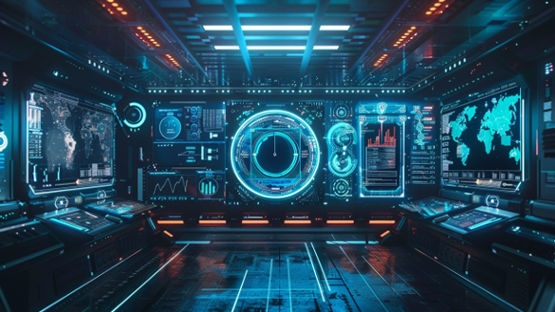Introduction:
AI is revolutionizing cybersecurity, transforming the traditional SOC into a next-generation powerhouse. This blog explores how AI and ML are empowering SOC analysts, streamlining operations, and enhancing threat detection and response.
Challenges of the Traditional SOC:
- SIEM overload: Analysts are unable to recognize genuine risks because of the deluge of low-fidelity warnings.
- Multi-vendor complexity: There are difficulties with visibility and correlation due to siloed solutions and inconsistent data.
- Limited automation: The complexity and high cost of SOAR platforms limit the effectiveness of responses.
XDR: Paving the Way for AI Integration:
- Unified view: XDR provides endpoint, cloud, and network comprehensive insight on a single platform.
- Integrated detection and response: combines automation features with the ability to prevent, detect, and respond.
AI in the Modern Next-Gen SOC:
- Active threat detection: Artificial Intelligence examines large amounts of data, spotting irregularities and anticipating possible attacks.
- Improved decision-making: AI-driven insights direct analysts to the most important threats and help them prioritize their actions.
- Enhanced quality of investigation: ML-based analytics decrease false positives and expedite investigations.
- Tier 1: AI reduces noise, facilitating faster threat detection and triage.
- Tier 2: AI supports threat intelligence, remediation, and incident analysis.
- Tier 3: Proactive threat hunting and sophisticated vulnerability detection are made possible by AI.
GenAI in the SOC:
- Real-time threat analysis: GenAI algorithms identify weaknesses and interpret complex attack patterns.
- Automated penetration testing: GenAI mimics attempts at social engineering and finds vulnerabilities.
- Reduced false positives: GenAI detects actual threats with greater accuracy, boosting analyst efficiency.
Key Performance Metric Improvements:
- Reduced MTTD, MTTI, and MTTR: AI speeds up threat identification, investigation, and reaction times, resulting in decreased MTTD, MTTI, and MTTR.
- Improved utilization of resources: Analysts concentrate on important tasks and make the most of them.
- Enhanced security posture: By proactively searching for threats, defenses are strengthened and future attacks are minimized.
Addressing Ethical Considerations:
- Data quality and bias: To prevent biased results, training data needs to be carefully selected.
- Concerns about privacy: It’s critical to handle data responsibly and transparently.
Combatting AI-Powered Criminals:
- Reactive vs. proactive: AI-powered SOCs counter evolving cyber threats with faster response times.
- Human-led, AI-powered: Combining human expertise with AI delivers optimal results.
Conclusion:
AI is a game-changer for modern SOCs, empowering analysts, automating tasks, and streamlining operations. By embracing AI responsibly, organizations can achieve a superior security posture and stay ahead of cyber threats.
You may also like:
https://hackedyou.org/api-automation-how-automation-can-revolutionize-your-apis/






